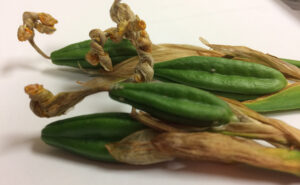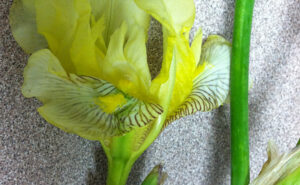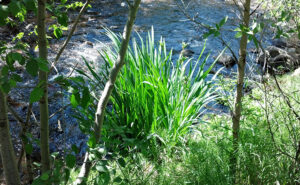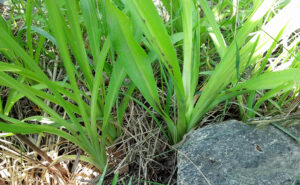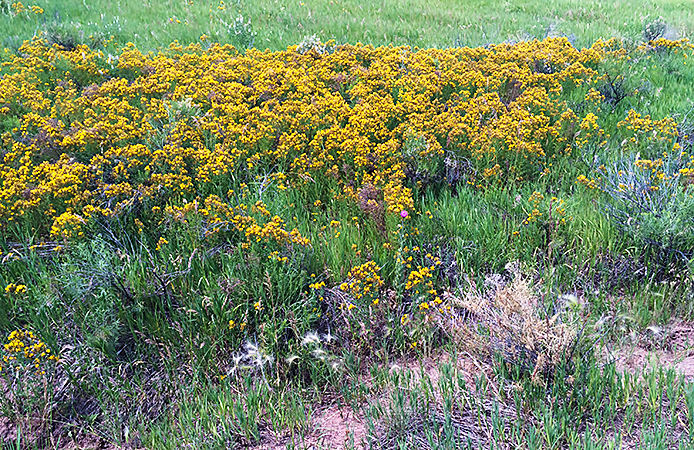Yellow flag iris
Iris pseudacorus
Yellow flag iris is a Watch List species being considered for addition to the state’s weed list by the Colorado Department of Agriculture.
It was imported to North America as an ornamental plant in the late-1700s but has escaped and now infests ditches, streams, and ponds. In some areas it has formed large monocultures and changed the adjacent ecosystems. Thick growths of yellow flag can clog irrigation systems and streams and, by trapping sediment in the roots, can narrow waterways. All parts of the plant are toxic to livestock and other animals.
Plants grow to about 3 feet tall with long sword-like leaves that grow from thick rhizomes in a fan-like arrangement. Leaves are about ½ to 1¼ inch wide, flat with a pronounced midrib. Plants resemble cattails when not in bloom.
The rhizomes can live for over 10 years in the soil and can remain viable for 3 months or more when dry.
Plants generally form flowers after three years. The 2-3-inch-wide flowers are yellow to whitish with three upward facing petals and three downward facing sepals. The sepals usually have dark purplish-brown streaking. Flowering is summer through fall.
Seeds are formed in three-sided pods. Each plant can form several hundred seeds that can survive and float for more than a year, enabling new infestations to establish long distances from existing occurrences.
RESOURCES
New York Invasive Species (Is) Information
https://nyis.info/invasive_species/yellow-flag-iris/#Origin
Washington State Noxious Weed Control Board
https://www.nwcb.wa.gov/weeds/yellow-flag-iris
University of Florida / IFAS / Center for Aquatic & Invasive Plants
https://plants.ifas.ufl.edu/plant-directory/iris-pseudacorus/
Vermont Invasives
https://vtinvasives.org/invasive/yellow-flag-iris
PHOTO CREDITS
Flower – Shaun Winterton, Aquarium and Pond Plants of the World, Edition 3, USDA APHIS PPQ, Bugwood.org
All Others – Jefferson County Invasive Species Management
